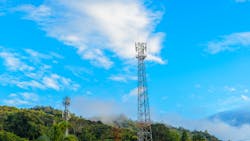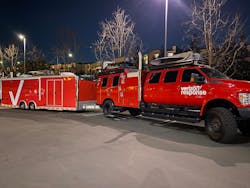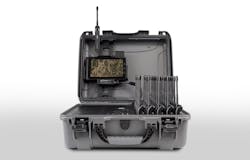There’s No Cell Signal; Now What?
If you look at a coverage map for any mobile carrier in North America today you’ll see something that indicates very few small uncovered areas. The implication is that you have or can have coverage “anywhere”—but we all know, whether you’re in law enforcement or not, there are spots in the country where cell signal drops out to very low or non-existent. Two big realizations to make are: 1) In many spaces where law enforcement is required to perform, there is no or low signal, and 2) Secure and reliable cellular connectivity is required for many law enforcement operations no matter where you are.
Let’s look at those two realizations individually and then some solutions for the challenges that exist. Realization 1: In many spaces where we work, there is no or low signal. This is just a reality no matter how much we’d like for it not to be. Even if you work in relatively urban areas there are places where your signal is low or non-existent. This may be due to topography, structures, environmental challenges, weather events or simply a lack of signal from nearby towers. When you look at the more rural patrol areas, like national parks, less populated areas and plains areas, there is often even less signal to be found and you also deal with some topography challenges.
This article appeared in the September issue of OFFICER Magazine. Click Here to view the digital edition. Click Here to subscribe to OFFICER Magazine.
In the more urban areas where you experience these challenges, often the low-signal areas are easily identified, and behavior adjusts to adapt. But that’s not always possible and there has to be a way to increase the signal availability or how your vehicle’s system manages it. No matter what area you work in, when the job calls on you to access information on a mobile data terminal (laptop) or to provide a location based on GPS, you need data transfer capability and you need it of sufficient quantity to perform the task at hand—sometimes multiple tasks at the same time. At a very minimum, you need to be able to communicate with other members of your team and you need that connection to be reliable.Realization 2: Another solution that can be used, on an ongoing basis and anywhere you have at least a minimal cell signal, is the SureCall Fusion2Go line of cell signal boosters. Each of these systems is designed to be mounted in your vehicle with an external antenna, a ruggedized amplifier and an internal antenna that provides the boosted signal and accompanying bandwidth to all of your data-driven devices. The external antenna requires a stable mounting platform and the signal amplifier needs some protection from the elements. So, as an example, if your patrol vehicle is an all-terrain vehicle, a mounted Pelican box of sufficient size would be perfect. You could even mount the SureCall system in/ on a motorcycle for patrol purposes, securing the signal amplifier in the same space you secure any other environmentally sensitive electronics.
Another solution we found, where there is no signal at all but you need connectivity for your team, is the goTenna Pro system to include their goTenna Deployment kit. The goTenna system builds its own, off-grid, cell signal independent mesh network that allows team members to communicate with, and track if necessary, each other. With some of the goTenna systems, all signals can be fully encrypted and provide data-burst transmission in communications denied environments.
As you can see just from the three described options, today’s technologies allow for connectivity (almost) no matter where you are. With minimal signal, SureCall can keep you connected and boost your ability to communicate or transmit/receive data. The Verizon Frontline THOR can be deployed and literally create connectivity where a disaster or other circumstances have damaged what was there, or where none is normally needed but the need is created due to emergency circumstance. The goTenna systems allow you to keep your team in communication with each other and can allow you to track team member locations even where no cell signal exists.
At the end of the day, the answer to your connectivity challenge exists; it’s just a matter of identifying your needs and requirements and then securing the proper solution. THOR is purely an emergency response/unanticipated need vehicle solution that would likely be best suited for regional staging. While smaller towns and cities may not have the ability to secure one, counties and states certainly could and then make it available via mutual aid agreements. If the emergency need is large enough to warrant a THOR deployment, all governmental level agencies will be working in cohesion anyway.
If your patrol area normally experiences areas of low signal, SureCall’s solution may be worth investing in for each of your patrol vehicles. For severe wilderness environments, having your teams equipped with a goTenna solution might be prudent. Research each and decide which one (or combined) is the solution to your challenge.
This article appeared in the September issue of OFFICER Magazine.

Lt. Frank Borelli (ret), Editorial Director | Editorial Director
Lt. Frank Borelli is the Editorial Director for the Officer Media Group. Frank brings 20+ years of writing and editing experience in addition to 40 years of law enforcement operations, administration and training experience to the team.
Frank has had numerous books published which are available on Amazon.com, BarnesAndNoble.com, and other major retail outlets.
If you have any comments or questions, you can contact him via email at [email protected].





